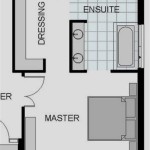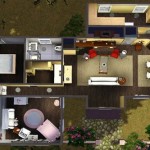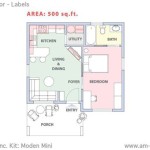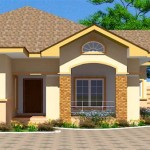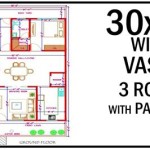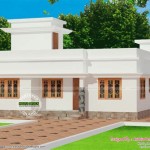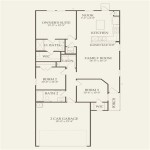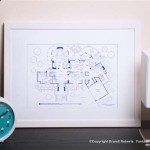30-40 House Plans North Facing Single Floor: Optimizing Light and Space
North-facing homes present unique design challenges and opportunities. Maximizing natural light and creating comfortable living spaces requires careful planning and consideration of the site's orientation. This article explores key elements in designing successful 30-40 house plans for north-facing single-floor homes.
A primary concern with north-facing homes is ensuring adequate natural light penetration. Strategic placement of windows and other openings plays a crucial role. Large windows along the north facade can capture ambient light, while clerestory windows or skylights can introduce sunlight from above. Consider incorporating light shelves or reflective surfaces within the home to bounce light deeper into interior spaces.
Open-plan layouts are particularly beneficial in north-facing homes. Removing internal walls allows light to travel further into the house. This design strategy also promotes airflow and creates a sense of spaciousness. Zoning different areas within the open plan, using furniture placement or changes in flooring material, can delineate specific functions while maintaining the open feel.
The orientation of living spaces requires careful consideration. Living rooms, dining areas, and kitchens, which typically benefit from natural light, should be positioned towards the north to maximize exposure. Bedrooms and bathrooms, requiring less direct light, can be placed towards the southern part of the house.
Outdoor living areas are an important extension of the home, particularly in warmer climates. North-facing courtyards or patios offer sheltered and shaded spaces ideal for relaxation and entertaining. Connecting these outdoor areas seamlessly with the indoor living spaces through large sliding doors or bi-fold doors further enhances the feeling of spaciousness and brings the outdoors in.
Material selection impacts both the thermal performance and aesthetic of the home. Light-colored exterior walls and roofing materials can help reflect sunlight and reduce heat absorption. Similarly, internal finishes and furnishings in lighter shades can enhance the perception of brightness and spaciousness.
Energy efficiency is a crucial consideration in any home design. North-facing homes can benefit from passive solar design principles. Orientating the house to maximize northern exposure, incorporating thermal mass, and utilizing appropriate insulation can help regulate indoor temperatures and reduce reliance on artificial heating and cooling.
Landscaping plays a vital role in optimizing the microclimate around a north-facing home. Deciduous trees planted strategically can provide shade during the warmer months while allowing sunlight to penetrate during winter. Careful placement of shrubs and other plantings can also enhance privacy and create a welcoming outdoor environment.
When developing 30-40 house plans for a north-facing single-floor home, consider the specific needs and lifestyle of the occupants. A young family might prioritize open-plan living and a large backyard, while a retired couple might prefer separate living spaces and a smaller, low-maintenance garden.
Flexibility in design is paramount. While the initial plan should address the specific requirements of the occupants, it should also allow for future adaptations. Consider incorporating multi-functional spaces that can be easily reconfigured to meet changing needs over time.
Engaging a qualified architect or building designer is crucial in developing a successful north-facing home design. They can provide expert advice on optimizing natural light, ventilation, and thermal performance, ensuring a comfortable and energy-efficient home.
Local building codes and regulations will influence the design process. Ensure the chosen design complies with all relevant regulations regarding setbacks, building height, and other requirements. Consulting with local authorities early in the planning process can avoid potential issues later.
Budget considerations should be addressed from the outset. Developing a realistic budget and adhering to it throughout the design and construction process is essential. Discuss budget constraints with the architect or building designer to ensure the design remains within the allocated funds.
Sustainable design principles are increasingly important in contemporary home design. Incorporating environmentally friendly materials, minimizing waste, and maximizing energy efficiency can reduce the home's environmental impact and contribute to a more sustainable future.
Accessibility is another crucial factor to consider, especially for multi-generational families or individuals with mobility challenges. Designing for accessibility involves incorporating features such as wider doorways, ramps, and accessible bathrooms to ensure all occupants can comfortably navigate the home.
The design process should involve regular communication between the client and the design team. Clear and open communication ensures the final design meets the client's needs and expectations. Regular meetings and updates throughout the process are vital for a successful outcome.
Consider incorporating smart home technology to enhance the functionality and efficiency of the home. Automated lighting, heating, and cooling systems can improve energy efficiency and provide greater control over the home environment.
Ventilation is a critical factor in ensuring a comfortable and healthy indoor environment. Cross-ventilation through strategically placed windows and other openings can help regulate temperature and humidity levels, reducing the need for artificial ventilation systems.
The final design should reflect a balance between functionality, aesthetics, and sustainability. A well-designed north-facing single-floor home can provide a comfortable, energy-efficient, and aesthetically pleasing living environment for its occupants.
Careful consideration of these factors during the design phase can ensure the creation of a north-facing home that maximizes natural light, promotes comfortable living, and provides a sustainable and enjoyable living experience.

House Plan 30x40 North Facing Duplex Gf Plans

30x40 North Facing House Plan Duplex 3bhk G 1 Ground Floor Plans

30 X40 North Facing Duplex First Floor 30x40 House Plans One Basement

30 40 House Plan North Facing Vaastu 75 Low Budget Homes In Kerala 2024 Small Elevation Single Floor Design Modern

30x40 House Plans Inspiring And Affordable Designs For Your Dream Home

30 X 40 North Facing House Plans Ground Floor 30x40 Duplex

30 40 House Plan North Facing Vaastu 75 Low Budget Homes In Kerala Outer Design Roof Bungalow

30 X40 North Facing House Plan Is Given As Per Vastu Shastra The 2d Autocad Drawing File One Floor Plans 2bhk

30x40 Floor Plan 5bhk Duplex Home North Facing Cad 3d

30x40 Floor Plan 5bhk Duplex Home North Facing Cad 3d

